Related Research Articles
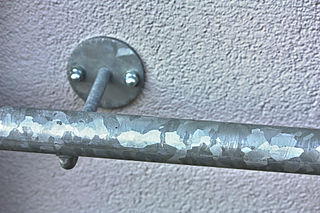
Galvanization or galvanizing is the process of applying a protective zinc coating to steel or iron, to prevent rusting. The most common method is hot-dip galvanizing, in which the parts are coated by submerging them in a bath of hot, molten zinc.

Claude Simon was a French novelist, and was awarded the 1985 Nobel Prize in Literature.

Georges Valois was a French journalist and national syndicalist politician. He was a member of the French Resistance and died in the Bergen-Belsen concentration camp.
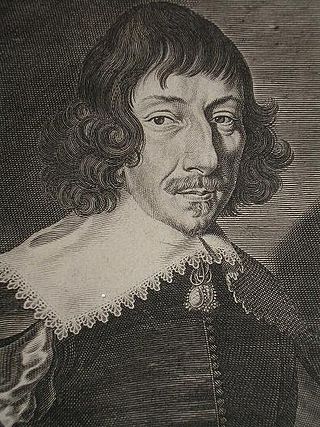
Charles Sorel, sieur de Souvigny was a French novelist and general writer.
Sorel cement is a non-hydraulic cement first produced by the French chemist Stanislas Sorel in 1867.

The Order of the Holy Spirit, is a French order of chivalry founded by Henry III of France in 1578. Today, it is a dynastic order under the House of France.
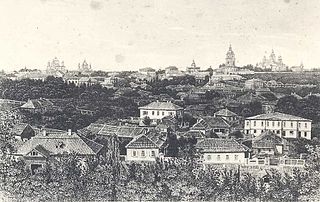
Zincography was a planographic printing process that used zinc plates. Alois Senefelder first mentioned zinc's lithographic use as a substitute for Bavarian limestone in his 1801 English patent specifications. In 1834, Federico Lacelli patented a zincographic printing process, producing large maps called géoramas. In 1837–1842, Eugène-Florent Kaeppelin (1805-1865) perfected the process to create a large polychrome geologic map.
Charles-Saint-Ange Thilorier was a student at the École polytechnique in the class / year of 1815, who was mistakenly believed to have been the first person to create solid carbon dioxide. Actually, a French inventor, Adrien-Jean-Pierre Thilorier (1790–1844), discovered dry ice.

The Leclanché cell is a battery invented and patented by the French scientist Georges Leclanché in 1866. The battery contained a conducting solution (electrolyte) of ammonium chloride, a cathode of carbon, a depolarizer of manganese dioxide (oxidizer), and an anode of zinc (reductant). The chemistry of this cell was later successfully adapted to manufacture a dry cell.

Henri-Paul Pellaprat was a French chef, founder with the journalist Marthe Distel of Le Cordon Bleu cooking school in Paris. He was the author of La cuisine familiale et pratique and other classic French cookery texts. He worked from the age of twelve as a pastry boy and then cooked at many of the most famous restaurants of the La Belle Époque Paris such as the Maison Dorée. He taught at l’École du Cordon bleu for 32 years; his students including Maurice Edmond Sailland, later known as Curnonsky, and Raymond Oliver.
Adrien-Jean-Pierre Thilorier was a French inventor who was the first person to produce solid carbon dioxide.
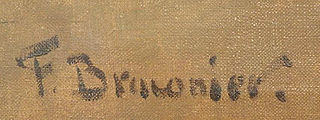
Frédéric François Albert Braconier was a Belgian artist from the Wallonia whose œuvre comprises at least 150 paintings and monotypes of considerable variety both in subject and style. He painted landscapes, city views and portraits and created numerous abstract compositions. Braconier was active for more than sixty years, artistically “reinventing” himself several times. The diversity of his works, bearing witness both to his curiosity and his willingness to change, makes him an interesting artist.
Magnesium hydroxychloride is the traditional term for several chemical compounds of magnesium, chlorine, oxygen, and hydrogen whose general formula xMgO·yMgCl
2·zH
2O, for various values of x, y, and z; or, equivalently, Mg
x+y(OH)
2xCl
2y(H
2O)
z−x. The simple chemical formula that is often used is MgClOH, which appears in high school subject, for example.Other names for this class are magnesium chloride hydroxide, magnesium oxychloride, and basic magnesium chloride. Some of these compounds are major components of Sorel cement.

Lucien Jean-Baptiste Baudens was a French military surgeon.

Georges Poisson was a French art historian.

Paul Claude-Michel Carpentier was a French portrait, genre, history painter and author. He studied with Jean-Jacques Lebarbier (1738–1826) and briefly with Jacques-Louis David (1748–1825). Until 1824 he exhibited at the Salons under his family name LeCarpentier, but after 1824 shortened his last name to Carpentier.
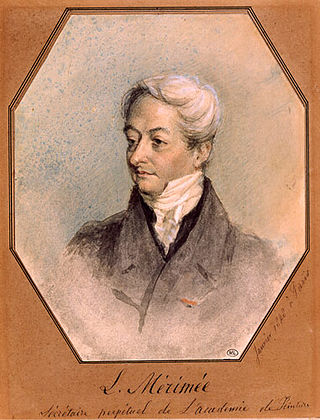
Jean-François Léonor Mérimée was a French writer, painter and chemist, specializing in pigment color in painting and decorative art. He was the father of the famous author, Prosper Mérimée.
Gérard Arseguel was a French poet.

Marie Léonie de Bazelaire de Ruppierre was a French painter and writer. In addition to writing several travel books, she was the founder and director of La Chevauchée, a bimonthly literary review for women that published between 1900 and 1903.

Colorado is a Moroccan company founded in 1962 and majority owned by the Berrada family.
References
- ↑ Beach, Alfred Ely (1871). Stanislas Sorel. Sci. Am, 25, 151.
- ↑ Beach, Alfred Ely (1872). The Science Record. Munn. pp. 382.
- ↑ Spennemann, Dirk H.R. (2017). Advertisements for Stanislas Sorel’s portable stove ‘Le Cordon Bleu’ (1833–1849). A visual data set. Institute for Land, Water and Society Report nº 101. Albury, NSW: Institute for Land, Water and Society, Charles Sturt University. ISBN 978-1-86-467289-3
- ↑ Spennemann, Dirk H. R. (2020). "Stanislas Sorel's zinc-based paints". Transactions of the IMF. 98 (1): 8–13. doi:10.1080/00202967.2020.1698858. ISSN 0020-2967. S2CID 214413679.
- ↑ Stanislas Sorel (1867). "Sur un nouveau ciment magnésien". Comptes Rendus Hebdomadaires des Séances de l'Académie des Sciences, volume 65, pages 102–104.